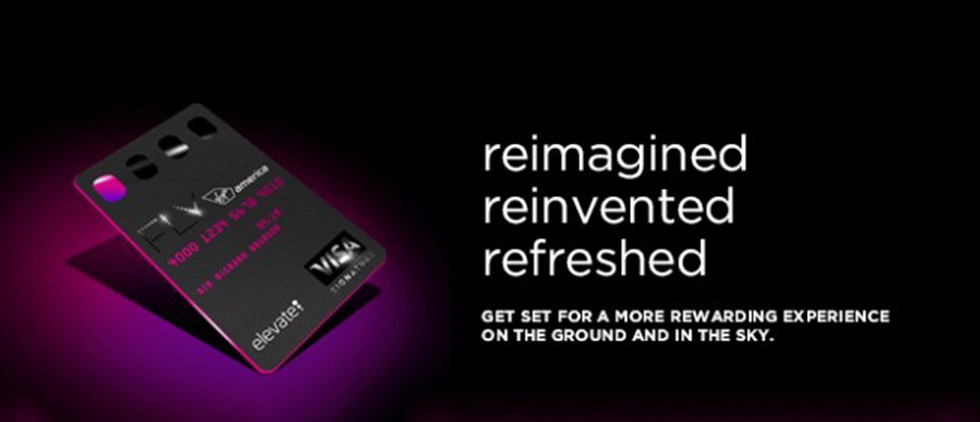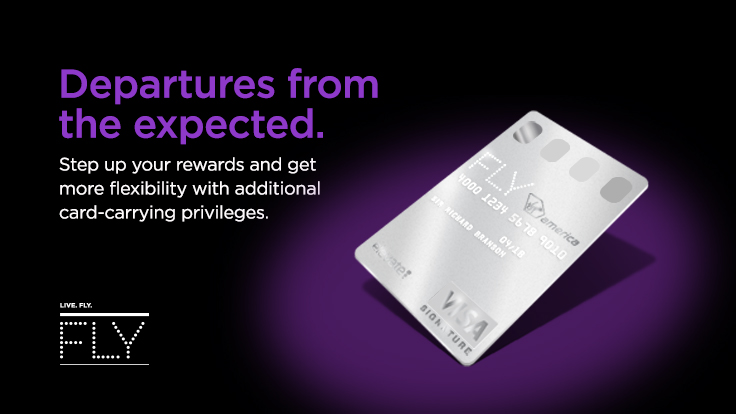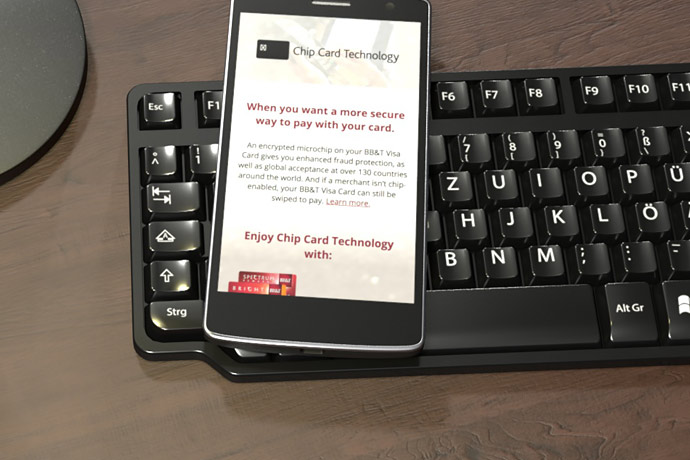A Departure from the Expected? The New Virgin America Visa Signature® Credit Cards

Last November, Virgin America and Barclaycard parted company and announced the discontinuation of the issuer’s Virgin America Visa and Virgin America Visa Signature® cards. Emails informed existing cardholders that their accounts would automatically transfer to the Barclaycard ArrivalTM World MasterCard.® The conversion also would result in a near doubling of the annual fee (to $89/waived the first year).
In its bid to retain share, Virgin America selected Alliance Data System’s Comenity Capital Bank as its new card partner to launch two new co-brand card products aligned with the airline’s Elevate® frequent flyer rewards program. The cards, a revamped Virgin America Visa Signature® ($49/annual fee) and a new-to-market Virgin America Premium Visa Signature® ($149/annual fee), offer travel perks for cardholders interested in earning points and elite traveler status.
As expected, the card marketing materials that are showing up in market tap Virgin America’s highly provocative brand personality. In a nod to the airline’s fun, playful mix of style, service and quality design, the marketing pieces capture unique brand details, such as the fuchsia-red color of the airline’s in-flight cabin mood lighting.

Announcement emails sent to pre-approved Elevate® members promise a “reimagined, reinvented, refreshed” and more rewarding cardholder experience with an emphasis on a new “FLY” graphic element, an offer for Elevate® bonus reward points and an “accept now” button. Although these are Visa premium products, language and copy points decidedly defer to the Virgin America side of the table in an appeal to the airline brand’s younger, affluent, “metropolitan cool,” tech-savvy audience. It is unknown if, but probable that, former Virgin America Barclaycard cardholders are also being targeted with offers to entice them away from the Arrival card offer.
The party continues on a companion website that introduces the cards with a youthful energetic beat and a “Swipe for the Sky” choreographed dance video that magically demonstrates the cards’ core benefits:
- points earning on everyday purchases (earns one point per $1 on everyday spend and up to three points per $1 on Virgin America spend);
- first checked bag free on flights;
- $150 discount on one companion ticket per year;
- 20 percent savings on Virgin America’s REDTM in-flight purchases of entertainment, food, and beverages; and
- points that never expire (and have no blackout dates).
In addition to the above, the Virgin America Premium Visa Signature® version adds:
- no ticket change or cancellation fees on non-refundable Virgin America flights and
- bonus of 5,000 status points for every $10,000 of spend, up to 15,000 status points per year, toward Elevate® Silver (20,000 status points needed) or Elevate® Gold (50,000 status points needed) status. (Additional bonus status points can be carried over at annual renewal.)
Each card also currently offers an application bonus: 10,000 points with the standard Virgin America Visa Signature® card, after spending $1,000 within 90 days of account opening, and 15,000 points with the premium version. Each 5,000 in points is worth $100.

Virgin America is proud of the new card designs, noting that they are “visually distinctive” and “mirror Virgin America’s sleek design aesthetic.” It is clear that the card teams and Comenity worked hard to differentiate the look of the new plastics from the older, more traditional design of the Barclaycard-era cards. While both the new cards take on the vertical format, the two cards are very different in appearance:
- The Virgin America Visa Signature® card is all black with a “mood lit” window that brings the in-flight “red aura” to the physical card product experience. In addition, the edges of the card are fuchsia in color as are the printed name, card number and expiration date information.
- Virgin America Premium Visa Signature® card looks like a blank piece of machined metal in an upscale monochromatic tone. Light-colored cardholder information offers minimal contrast.
Reports of early cards in market are somewhat disappointing. New account holders have complained of thin plastic – almost like a faux card – with the fronts of the card scratched from the cardholder information and embossing of the FLY graphic element for texture. That could be a penny-wise, pound-foolish manufacturing mistake given the audience that Virgin America is seeking. The flimsy quality of the card could make all the difference in the world to capture usage, spend and deliver on the Virgin America customer experience. Neither card contains an EMV chip – which would be a nice addition considering Virgin America’s three popular Mexico destinations and that country’s near complete migration to EMV/chip card adoption.
Given the benefit structure, it’s likely that Virgin America’s loyal Elevate® frequent fliers will opt for the “premium” version of the card in lieu of carrying a Barclaycard Arrival.TM The $100 difference in cost is easily justified by the additional 5,000 points (again, equaling $100) this card rewards as an application incentive. Also, recouping the additional cost with just a single no-fee ticket change or cancellation or earning annual bonus awards after just $10,000 in spend makes it a break-even for those that had the old card – and perhaps a new crop of cardholders who did not.
Outside of the San Francisco hub and other key west coast markets, most cardholders will most likely opt for the standard Visa Signature® product. With it they will retain most of the former Virgin America and Visa Signature® benefits in a more affordable and relevant package than that offered by the Barclaycard Arrival conversion.









